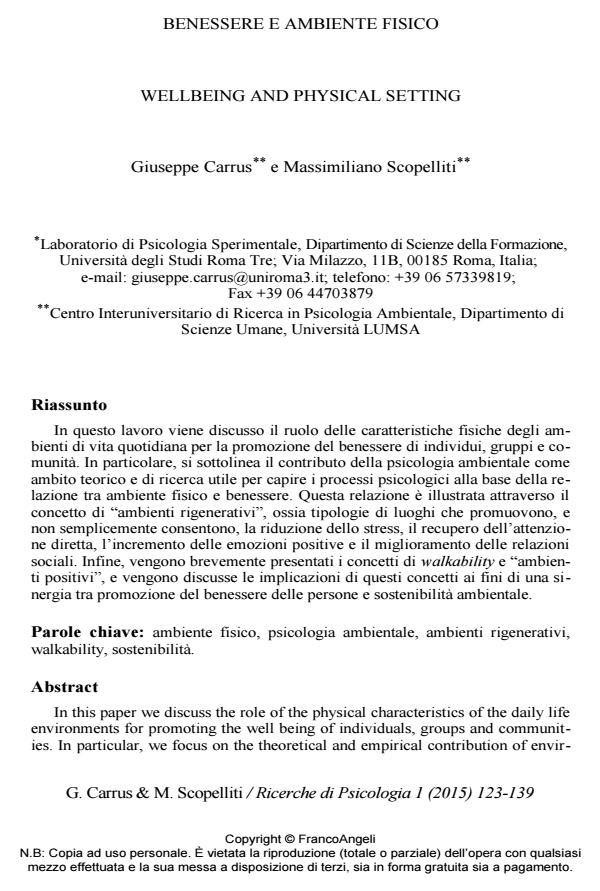Benessere e ambiente fisico
Titolo Rivista RICERCHE DI PSICOLOGIA
Autori/Curatori Giuseppe Carrus, Massimiliano Scopelliti
Anno di pubblicazione 2015 Fascicolo 2015/1
Lingua Italiano Numero pagine 17 P. 123-139 Dimensione file 228 KB
DOI 10.3280/RIP2015-001007
Il DOI è il codice a barre della proprietà intellettuale: per saperne di più
clicca qui
Qui sotto puoi vedere in anteprima la prima pagina di questo articolo.
Se questo articolo ti interessa, lo puoi acquistare (e scaricare in formato pdf) seguendo le facili indicazioni per acquistare il download credit. Acquista Download Credits per scaricare questo Articolo in formato PDF

FrancoAngeli è membro della Publishers International Linking Association, Inc (PILA)associazione indipendente e non profit per facilitare (attraverso i servizi tecnologici implementati da CrossRef.org) l’accesso degli studiosi ai contenuti digitali nelle pubblicazioni professionali e scientifiche
In questo lavoro viene discusso il ruolo delle caratteristiche fisiche degli ambienti di vita quotidiana per la promozione del benessere di individui, gruppi e comunita. In particolare, si sottolinea il contributo della psicologia ambientale come ambito teorico e di ricerca utile per capire i processi psicologici alla base della relazione tra ambiente fisico e benessere. Questa relazione e illustrata attraverso il concetto di "ambienti rigenerativi", ossia tipologie di luoghi che promuovono, e non semplicemente consentono, la riduzione dello stress, il recupero dell’attenzione diretta, l’incremento delle emozioni positive e il miglioramento delle relazioni sociali. Infine, vengono brevemente presentati i concetti di walkability e "ambienti positivi", e vengono discusse le implicazioni di questi concetti ai fini di una sinergia tra promozione del benessere delle persone e sostenibilita ambientale.
Parole chiave:Ambiente fisico, psicologia ambientale, ambienti rigenerativi, walkability, sostenibilita.
Giuseppe Carrus, Massimiliano Scopelliti, Benessere e ambiente fisico in "RICERCHE DI PSICOLOGIA " 1/2015, pp 123-139, DOI: 10.3280/RIP2015-001007